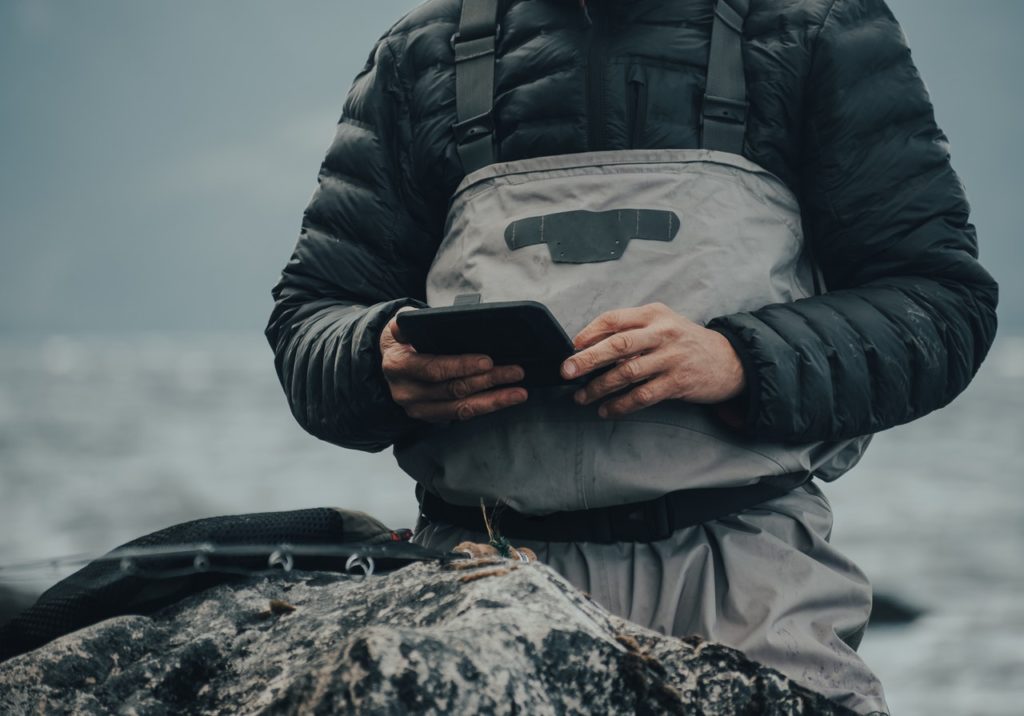 Fly Rod
Fly Rod
A fly rod is a tool that you’ll be using to cast your line. A good one can make all the difference, though it’s not necessary for beginners. They come in different weights, strengths, and lengths, all for various reasons, such as targeting larger fish like salmon or the ability to cast your line further. Make sure to do your research on which rod will work best for you.
Fly Reels
Most rods come with a matching reel, but if yours doesn’t or if yours breaks down, don’t worry about replacing them together. They are separate pieces of equipment, after all! Fly reels are used to store extra line and keep everything organized when not in use. Some even have their own drag systems, which help convert stored energy into stopping power so you can land large fish more easily! They’re especially helpful during long fights where heavyweights on both ends could cause damage to your blank (the main piece).
Rod/Reel Case
If you plan on doing any traveling by aircraft, then make sure you have a protective carrying case for both your rods) and reel(es). A good case will fit your fly rods, waders, and polarizing sunglasses with room to spare for tippet material, forceps, or pliers.
Fly Fishing Line
Fly fishing line is the material that connects your rod to your fly, and it comes in a variety of different weights. The type you need will depend on what kind of fish are around where you’re going. Generally speaking, though, most beginners should start with an indicator or floating line so they can see their presentation underwater more easily!
Leaders
The leader is the piece of equipment between your tippet (the section closest to your fly) and knotless tapered nylon monofilament, which acts as an intermediary for the strength-to-diameter ratio. It’s also what guides the hook towards its intended target when cast out into the water. Leaders come in all shapes and sizes depending on how weight needs to be supported at the end.
Tippets
The tippet is the last type of line which fits in between the leader and the fly. The tippet is usually the smallest and thinnest piece of line on your setup, and it is almost invisible to the fish. A tippet helps provide a more natural movement of the fly in or on the water.
Variety Of Flies
There are countless different types of flies you can use to match the hatch, but chances are that you won’t be able to make them yourself. However, most fly shops will have a variety on hand for sale or sometimes even trade if they feel generous! Do some research on the area you intend to fish and, if possible, speak to local anglers to find out what has been working for them in that area. Fish could be particularly difficult to catch with the wrong fly.
Fly Boxes
A fly box is where you keep all of the flies you’re going to use during a fishing trip. We recommend using two types of boxes: one for dry-flies (which float) and another for nymphs (which sink). This way, it’s easy to quickly change out what type of bugs are on your line without having to sort through everything in front of fish!
Fly Fishing Vest
A good fly fishing vest will help keep all your essential gear close by and easily accessible while wade fishing. It can also be used to hold a water bottle, sunscreen, or even extra snacks. There are many types available that are functional and fashionable. They can be ordered through online stores such as EcoGearFX.com. Always ensure that you select a size in which you can comfortably move around.
Scoop Net
Catching fish with your hands is complicated and dangerous, especially when there’s more than one around! So you’ll want an extendable net with solid metal components which attach easily onto your vest, so it doesn’t get in the way while still being accessible at all times. If you’ve got room, though, bring two just in case something big comes along, you don’t want to let go of it now after all this effort catching it!
Polarized Sunglasses
The glare of sunlight off the surface of lakes or rivers can be blinding without polarized sunglasses! This is because polarization makes light waves move at right angles, which blocks reflected light off the water’s surface. This can help you spot fish easier and make a big difference to the success of your trip.
Waders
If you intend to target specific areas, which may require entering the water, waders are essential. Waders are waterproof pants that protect you from the cold and make moving around in the water easier! In addition, by keeping your lower half dry, you can stay out on the lake longer.

